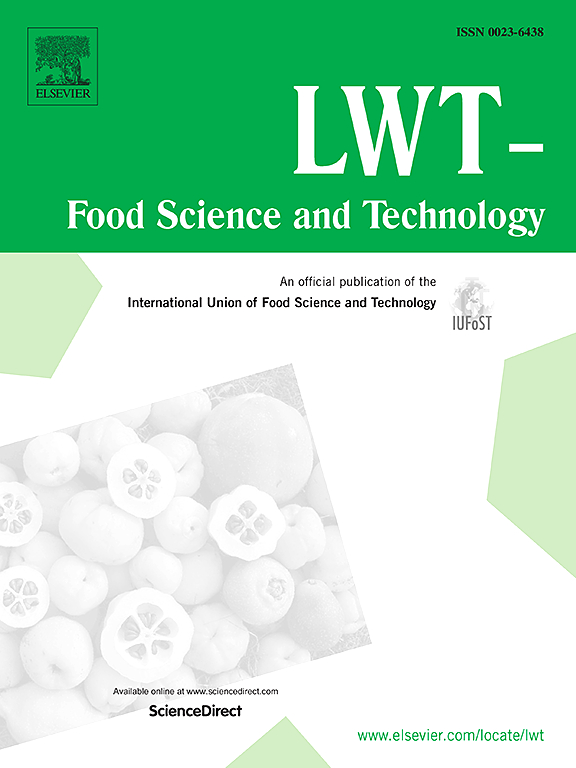Enhancing the functional value of Andean food plants: Enzymatic production of γ-aminobutyric acid from tarwi, cañihua and quinoa real seeds’ proteins
IF 6
1区 农林科学
Q1 FOOD SCIENCE & TECHNOLOGY
引用次数: 0
Abstract
Gamma-aminobutyric acid (GABA) is known for its multiple physiological functions, including beneficial effects against several metabolic disorders. This study explores enzymatic strategies to enhance the functional value of Andean seeds, specifically tarwi (Lupinus mutabilis), cañihua (Chenopodium pallidicaule) and quinoa (Chenopodium quinoa) real varieties, by converting their naturally occurring glutamic acid into GABA. Two isoforms of glutamate decarboxylases (GADs) from Levilactobacillus brevis, GadA and GadB, separately produced in Escherichia coli, were used to convert the seeds’ glutamic acid into GABA. The activity of GAD enzymes was analysed with and without a prior pancreatin treatment to release free glutamic acid from the seeds' proteins. The results show that tarwi produced the highest levels of GABA, while the yields in cañihua and quinoa increased when treated with both pancreatin and GAD enzymes. An unexpected proteolytic activity from the GAD enzymes was observed, possibly contributing to further glutamic acid release and enhancing GABA production. This study denotes the initial exploratory enzymatic conversion of glutamic acid to GABA in Andean seeds, providing a novel approach to improve the functional value of these seeds in food and nutraceutical applications. These results also highlight the potential to optimize enzymatic methods to maximize GABA production in plant-based foods.
求助全文
约1分钟内获得全文
求助全文
来源期刊

LWT - Food Science and Technology
工程技术-食品科技
CiteScore
11.80
自引率
6.70%
发文量
1724
审稿时长
65 days
期刊介绍:
LWT - Food Science and Technology is an international journal that publishes innovative papers in the fields of food chemistry, biochemistry, microbiology, technology and nutrition. The work described should be innovative either in the approach or in the methods used. The significance of the results either for the science community or for the food industry must also be specified. Contributions written in English are welcomed in the form of review articles, short reviews, research papers, and research notes. Papers featuring animal trials and cell cultures are outside the scope of the journal and will not be considered for publication.
 求助内容:
求助内容: 应助结果提醒方式:
应助结果提醒方式:


